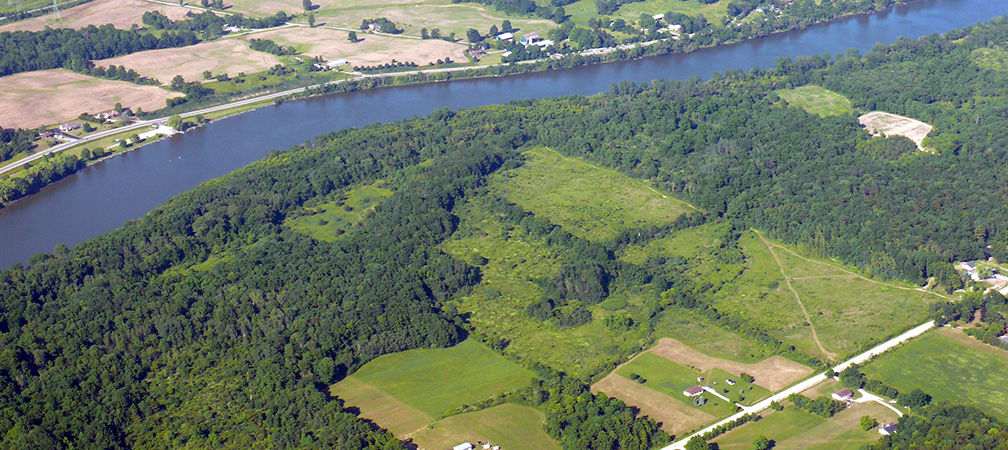Ontario Nature Blog
Receive email alerts about breaking conservation
and environmental news.
© Lora Denis
Niagara Escarpment © Bill Onasill
The provincial government has recently announced policy changes regarding land use planning in Ontario. I sat down with Professor Roger Keil, to discuss how land use planning works and how public participation could play a role in protecting the environment by influencing policy decisions.
Keil teaches at the Faculty of Environmental Studies at York University in Toronto, and he researches global suburbanization, urban political ecology, cities and infectious disease, and regional governance. Keil is the author of Suburban Planet (Polity 2018) and co-editor of several publications, including Public Los Angeles: A Private City’s Activist Futures (UGAPress 2020), The Globalizing Cities Reader (Routledge 2017), Suburban Governance: A Global View, and Massive Suburbanization in that series. He is also the editor of the Global Suburbanisms book series with University of Toronto Press.

Melina Damian: How does land use planning, if done effectively, advance biodiversity conservation and environmental health?
Roger Keil: Land use planning in a way is set up to be the logical opposite of protecting the environment. Philosophically, land use planning is about development. It’s about getting things built and getting stuff done in the landscape that is not natural in the classical sense of the world. It says, “this is where the roads are, this is where the tracks of the rail roads are, and this is where we’re going to build residential units, this is where there will be a shopping mall, and over here is a factory.” So, in a way land use planning in its inception is about ordering the destruction of the natural environment. Thinking about it in these terms, you could look at this as sort of the opposite of helping effectively the protection of natural life. Of course, it’s not that easy.
First of all, a lot of land use planning, in its intention at least, is meant to also protect environmental conditions (flood control, for example). But land use planning is also meant to protect humans – and humans are also natural. If we stop dividing humans from non-human nature, then we get already a different idea of what land use planning can do. Land use planning offers a way to order the landscape, to order the world in which we live, and to keep noxious spaces away from humans. So, rather than seeing it as grey and green, human vs. non-human, or planning land use vs. unencumbered nature, we can see now that land use planning is about regulating the relationships between them.
If you think about it this way, biodiversity conservation can actually be a positive outcome of land use planning, because land use planning can entail creating safe zones for certain processes through which natural relations and socio-natural relations are preserved. It has a lot to do with how air, water and soil and all these natural systems relate to the city — and human use of those systems.
A good example for that is the Ontario Greenbelt legislation. You could look at the greenbelts as a negative land use plan, in the sense that greenbelts stipulate “you’re not allowed to build here”. So, rather than land use planning which says: “we tell you what you can build over here, or how you can use the space”, the Greenbelt says, philosophically, that you are not allowed to build at all. It’s a zone of no-growth, a zone of no development. It’s a negative land use plan because it says: “no development, no land use of the urban kind.” But you can also look at the Greenbelt as a negotiating zone between urban uses and non-urban uses. In the Greenbelt, you find areas for agriculture, forests, recreational places, places where you have Christmas trees (for example), hiking paths, etc. Then if you look at it this way, land use planning, uses the Greenbelt as a negotiating tool to protect natural environments. In land use where you see an abundance of species (bees, birds, etc.), you see that space can also be shared with humans who visit on the weekend. In that sense, we also give up this idea that land use planning is opposed to the natural environment. Because it can be done in such a way it says “okay, we create growth centres over here and less growth, or no growth over there, we call that the Greenbelt…”. In that way, it is a fairly easy to understand process by which land use planning can be protecting the natural environment.
Read the full interview.

Gananoque Lake Nature Reserve © Smera Sukumar
The interview touches on the role of the LPAT (formerly the OMB) but the Law Times reported yesterday that the Ford government announced its intention to group LPAT, Environmental Review Tribunal, Board of Negotiation, Conservation Review Board and Mining and Lands Tribunal under the Ontario Land Tribunals. In the future, Hearing Officers may not have the expertise required to fully understand an issue before it and may revert to adjudicating questions of process.
That’s important to note. Thanks for your input Peter! – ON Melina